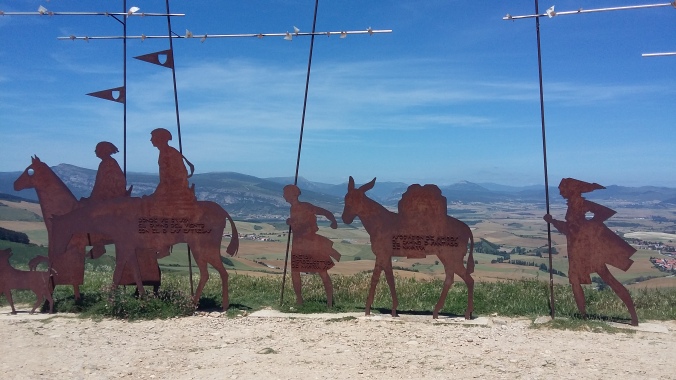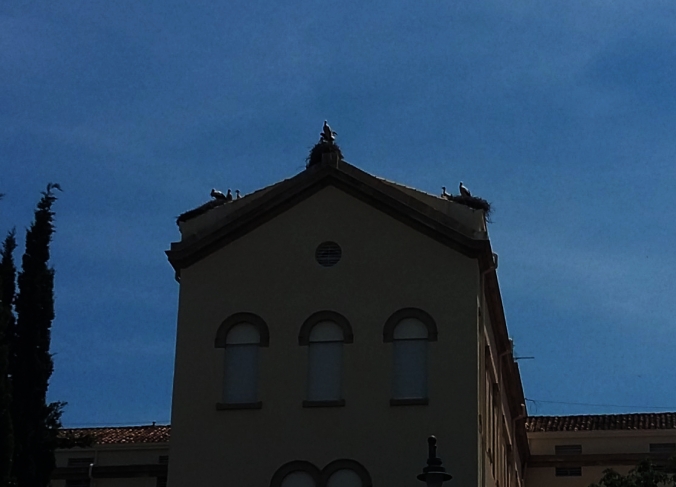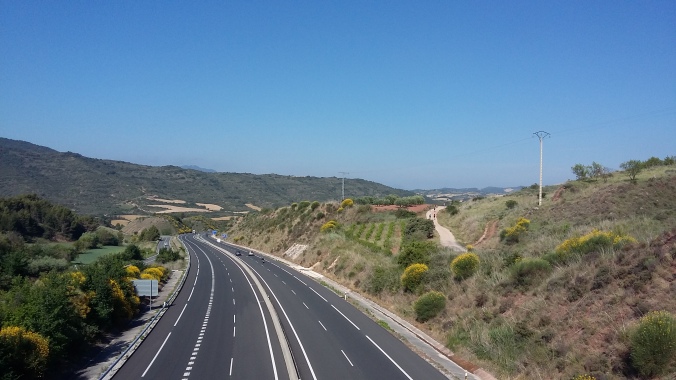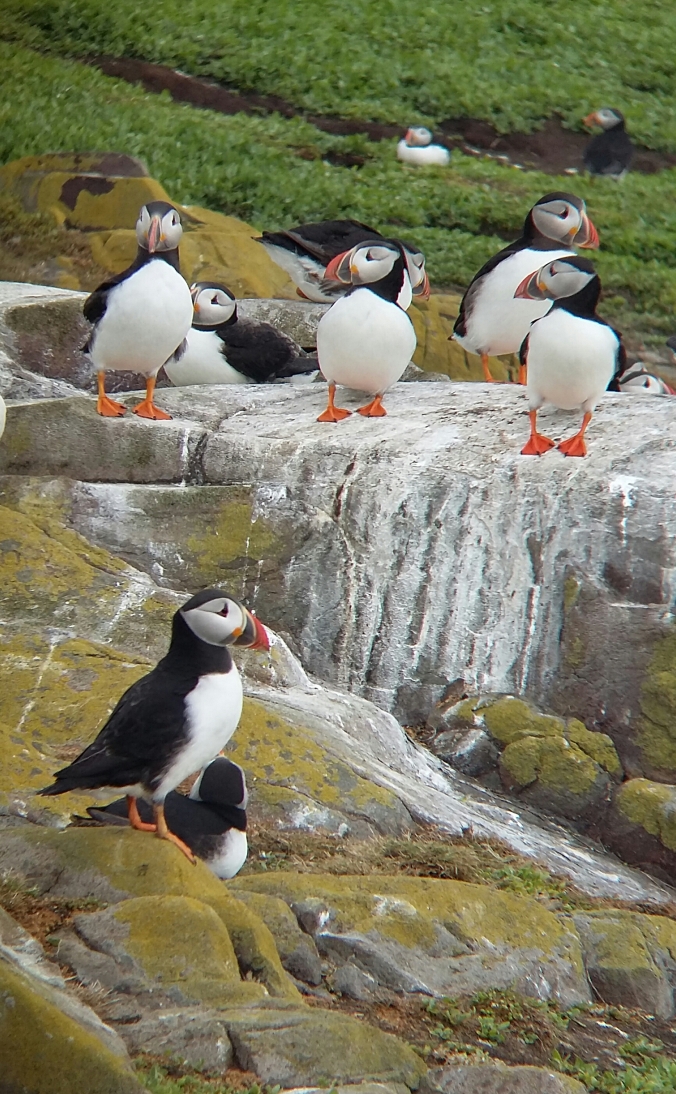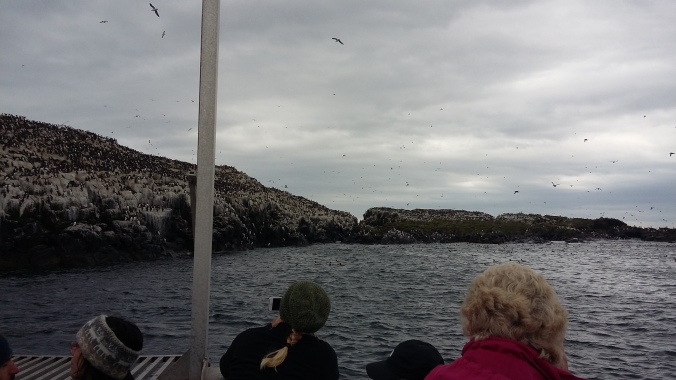We stand in the dark and listen to the rolling of the waves below. Before us is a steep drop, leading down to a foam speckled sea, its waves whipped up into a frenzy by the wind. The rain soaks slowly into my waterproof, dripping in a steady stream down my face. Removing my now useless glasses I peer out into the landscape around. To our left the lights of Llandudno shine invitingly, seeming dangerously close to the turmoil of the shore. I lick my lips, tasting the salt of the sea spray.
I can’t deny many would find us strange for venturing out into this dark place on such a night. Huddled together in the gloom we looked rather like a group of under prepared tourists awaiting the mountain rescue team, but in fact there was a very good reason for our actions. There, low in the grass, we crouched gazing at that reason. A small bright beacon of light shone in the dark. Yellow green in colour, it was the same size and strength of an LED on a radio or alarm clock. Except this wasn’t some feat of human engineering, this was a miracle of evolution. It was something I’d never expected to come face to face with on British soil; a glowworm.

Across the world glowworm can mean different things. In the UK, and generally across Europe, we use it to refer to a particular species of firefly, where the female is flightless and glows and the male can fly but doesn’t glow. In America glowworm is simply used for any firefly larvae that glows, whilst its winged and glowing parents are fireflies. In Australia and New Zealand glowworms are the larvae stage of a type of fungus gnat, famed for lighting up caves with their wonderful blue displays, looking to all the world like a starry sky in the depths of the earth.
But back in the UK we can make life simple. Here there are only two species of glowworm. Both are types of beetles (as are the fireflies of America and mainland Europe) and curiously enough the rare and elusive lesser glowworm doesn’t even glow. So glowworms in the UK aren’t worms and not all of them glow. Perhaps it isn’t so simple.
The tiny luminescent creature which had dragged me out into the wind and rain was the common glowworm, which thankfully does glow. As their name suggests they are surprisingly common, spread across the UK from Cornwall to up beyond the Scottish highlands. They are found throughout Europe and even into Asia, and can live nearly as far North as the arctic circle. To explain away the rest of their seemingly confusing name the word ‘worm’ was historically given to anything long and wriggly, with even snakes included in this category. Strangely enough the cliffs on which I found myself whilst in pursuit of this little worm were those of the Great Orme which itself is named after the viking for sea snake, with Orme being the word which later evolved into our ‘worm’.
The common glowworm is a fascinating creature, perfectly evolved to fulfill the task it has been set out to do. Their life cycle begins as an egg, one in a batch of over a hundred laid by their mother. These eggs already glow slightly even before the larvae have emerged. Within a few weeks the young hatch and begin their lives as voracious predators. Sharp pincers and a toxic venom make them a terrifying opponent for anything living amongst the grassland they call home. So who should be quaking in their boots as these many-legged creatures crawl forward through the night? Snails. Amazingly our glowworm’s favorite prey are the gardener’s pest. The glowworm larvae use their venom to paralyze their much larger victims and then simply suck out the liquified flesh. Who would have thought these beautiful creatures could be such cold-blooded killers. In the true style of a psychopathic murderer they even clean up the evidence, using a specially adapted brush-like implement on the end of their tail to remove any traces of the killing. So great is the feast that the glowworm can survive for up to a month before it needs to feed again.

The larvae will spend one or two summers feeding in this way, hibernating under logs in the winter, before pupating and emerging as an adult. Adult females are larger than the males, around 15-25mm, and have several clear segments on the ends of their tails where the process of bioluminescence can take place. Both the males and the larvae can also glow, though in males this is only very dimly and intermittently in the larvae, perhaps as a warning to predators. The wingless females look much like larvae, though entirely black, unlike the spotted larvae. The males have wings so they can fly to the females and large eyes to hunt out their glow in the dark. Amazingly the males have even evolved a charming cap which shields them from skyward distractions, presumably meaning thousands of their ancestors died childless trying to make love to the moon.

Whilst the common glowworm is found across the UK in a variety of habitats they do have their preferences. One of course is the presence of their prey species snails. Although snails are common there have long been issues with poisons being used on these sometimes troublesome molluscs. Metaldehyde, found in many slug pellets, is not only used in gardens but in large quantities across our farming landscape to keep crops, especially Brassicas such as oilseed rape, safe from these feisty pests. However as slugs and snails disappear from our landscape so do their predators such as the hedgehog and even the glowworm. An additional cause for concern is that metadehyde doesn’t break down easily so they can leach into waterways, and can even been found in our drinking water.
As well as a good supply of their favorite snack, glowworms require a mixture of different habitats, which once would have been common across the UK. Glowworms like areas of open grassland and scrub, with swathes of longer and shorter grass. Traditional agricultural practices would have given the glowworms plenty of places to live, with there being reports of their wonderful lights being found on grazing pastures and even in crop fields. Today intensive agriculture has resulted in high stocking densities meaning grass is grazed too low for the glowworm and overuse of pesticides means many crop fields are now a death trap. Today they are mostly found in areas which are still traditionally managed, be they reserves or privately owned land. Graveyards can also be excellent places for glowworms, as can the edge of railways. They are even found in open woodlands, though denser woods are generally unsuitable.
With snail deaths high and habitat decreasing the glowworm numbers are thought to be declining. Anecdotal evidence speaks of hillsides alive with these amazing creatures, while today only scattered handfuls remain. Even more to their detriment is their inability to travel far enough to colonise new areas, with the larval stage only moving tens of meters from its base. Indeed females barely travel at all, with their brief weeks as adults being numbered, their lack of mouthparts means they can only rely on the stores they built up as a larva. Males too are unable to feed, meaning that while they could fly to new spots they are unlikely to stray far from the local females. Habitat fragmentation has compounded this problem, meaning roads and unsuitable habitat divide populations.
As we stood on that wet and blustery hillside I must say the rain wasn’t enough to drive me away from our charming company. Hanging onto her little perch our glowworm pointed her tail up to the sky and swung it from side to side, making sure her light wasn’t being obscured by a blade of grass. She’ll do this for two or three hours every night for several weeks, until her energy reserves have run out. If mated before then she’ll turn off her light, climb down to the ground and lay her luminous eggs, dying soon after.
Glowworms are a fascinating species, and a truly magical sight to behold. On the night we visited the Great Orme, with our knowledgeable guide from the Conwy Valley branch of the North Wales Wildlife Trust, we saw eight glowing females, a fantastic sight. But a few days later, combing the whole hillside in better conditions than we had, a surveyor spotted over 800. It’s an amazing spectacle to imagine the enormous mound of the Great Orme sat in the darkness of the sea, its surface twinkling with hundreds of lights. It is a beacon of hope showing that, not only for the glowworm but for so many of our declining species, we can reverse the trend. We just have to be a little more careful with our countryside. After all, this is not just our home but also theirs.
Many thanks to Mark Sheridan from the Conwy Valley branch of the North Wales Wildlife Trust for letting me use his wonderful pictures. For anyone interested in getting out and spotting glowworms www.glowworms.org.uk/ is an excellent resource.






